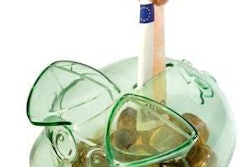Poultry farmers in the United Kingdom (UK) operating close to sensitive ecological sites could be among EU livestock producers caught out and forced to close by a sudden no-warning change in critical ammonia emission levels laid down by the European Community - inspired IPPC rules and regulations.
Integrated Pollution Prevention and Control (IPPC) is a regulatory system that uses an integrated approach to control environmental impact to air, land and water of emissions. Clearly established to cover industrial production it additionally ensnares intensive poultry production through nature of its activity.
IPPC involves controls to protect the environment through requirement of a single permitting process. Emissions are defined as being the direct or indirect release of substances, vibration, heat or noise from individual or diffuse sources in an installation into the environment.
In order to gain an IPPC permit, operators must show they have developed proposals for Best Available Techniques (BAT) for pollution prevention and control and address other requirements related to local factors. IPPC was introduced by the European Community (EC) Directive 96/61/EC on Integrated Pollution Prevention and Control.
One environmental objective of IPPC implementation was to meet protection of the environment by preventing or minimising emissions to air, land and water. IPPC applies to specified installations – both existing and new builds – and requires each operator to obtain a permit from the appropriate regulator.
A little-known European committee has just reduced allowable ammonia emissions near sensitive habitats. IPPC itself is only known and appreciated by those forced to hold permits, while most people have no clue about the tiny plant associations this new move is designed to protect. Among the species covered are lichens, tiny organisms that encrust tree trunks, wooden fences and roof tiles with coloured patches in yellow, orange, green and blue. Lichens are not single stand-alone plants at all, but associations between algae and a fungus.
It is reported that DEFRA (Department for the Environment and Rural Affairs) and the Environment Agency were caught as unawares, as were livestock producers, without any opportunity for discussion. She further expressed concern that it appears to have been introduced without any impact assessment let alone consultation.

















